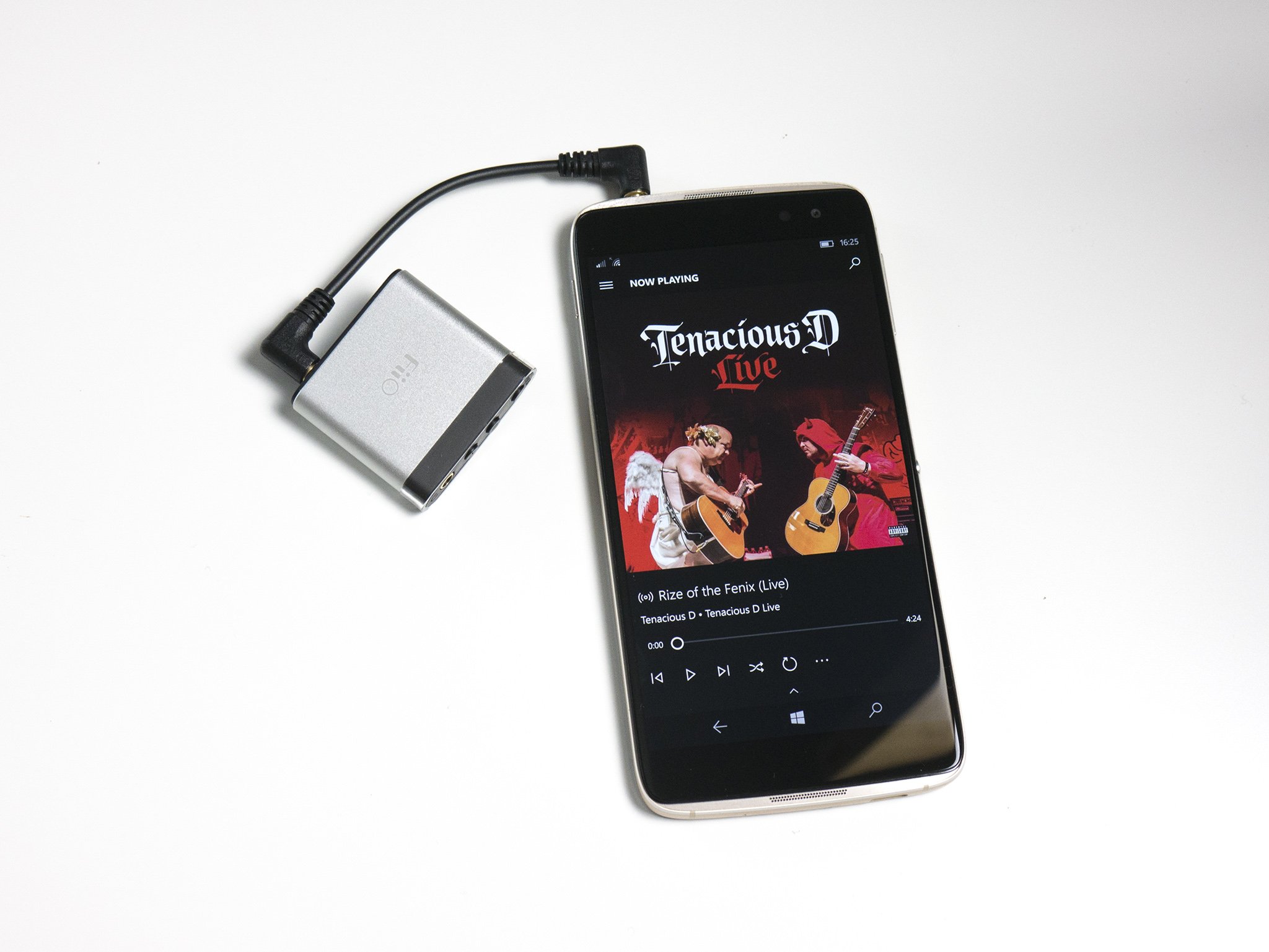While the Zune may be a thing of the past, with a smartphone in all of our pockets we all have music at our disposal wherever and whenever we want it. However, smartphones aren't dedicated music players and as such, they don't always have the hardware inside to really make the most of your tunes.
There are exceptions, and Sony and LG released recent Android phones that embrace audio. What can the rest of us do to enhance our aural experience? A set of good headphones is crucial, but what about an amplifier?
Fiio A1 all up in your ear
The Fiio A1 is a palm-size little box that goes between your phone and your headphones with the promise of boosting the audio. This isn't a Digital to Analog Converter (DAC), so it's not going to revolutionize your sound completely. But what it should do is give you more volume, as well as the benefit of an easily accessible equalizer to get the sound you desire.
It only costs $28, which is firmly in impulse-buy territory. I've been using it for a few days with my Alcatel Idol 4S and a pair of Audio Technica ATH-M50x headphones to get a feel for it. I can honestly say I'm impressed based on the cost.
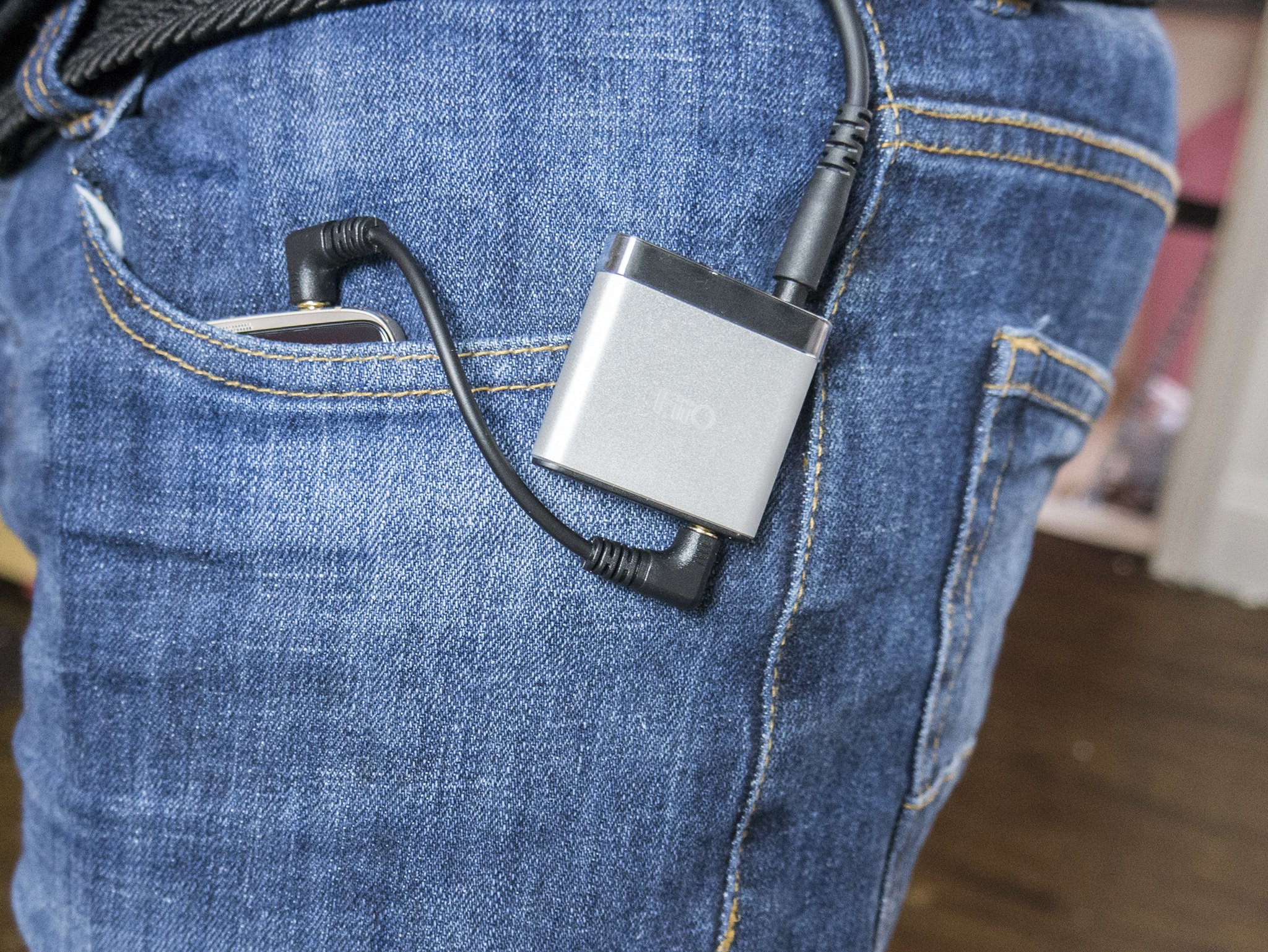
Fiio A1 specs
- Colour: Silver
- Material: Brushed aluminum alloy
- Output power: >70W (32 Ω)
- S/N ratio: >100dB ("A" weighted)
- THD: <0.01 percent (1kHz)
- On/Off switch: Button with embedded LED indicator
- Line input: 3.5mm line-in port
- Headphone out: 3.5mm headphone port
- Power supply: Internal rechargeable Li-Poly battery
- Size: 42mm x 40.7mm x 9.4mm
- Weight: 20g (116g with packaging)
The A1 comes with a trio of plastic clips in the box for you to slip it into and attach to your clothing or belt. Otherwise, it's a tiny metal box with a 3.5mm jack to plug your headphones into and another to attach a 3.5mm male-to-male cable (also included) that goes out to your phone.
The A1 charges over micro USB, and you should get around 13 hours of battery life. That's enough to get you through a long-haul flight, but it's more impressive still given the 160mAh capacity. And you can always hook it up to a regular battery pack or your laptop to keep you juiced if you're away from an outlet for a long time. Operating it is simple: You turn it on, and your music starts coming through.
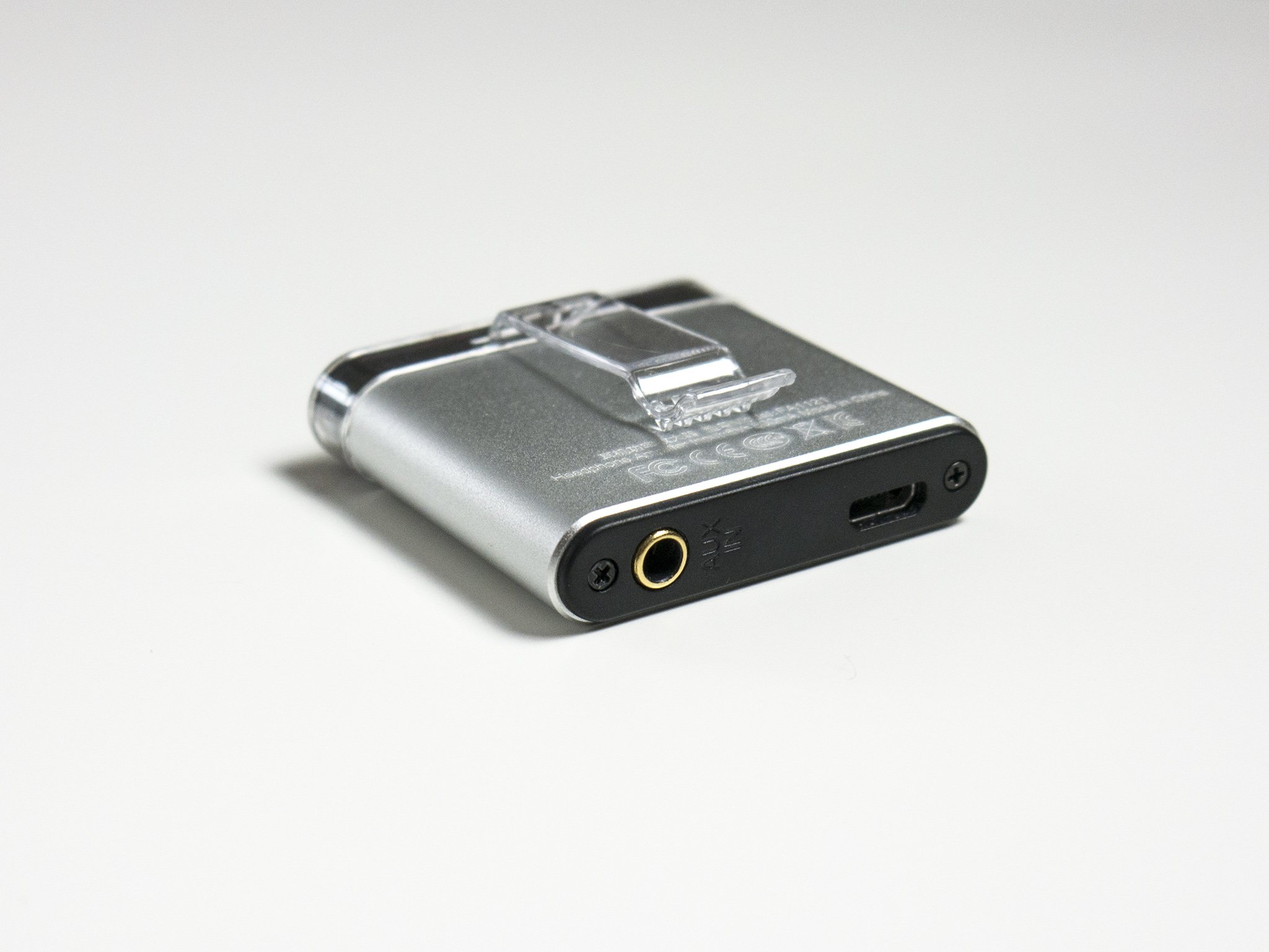
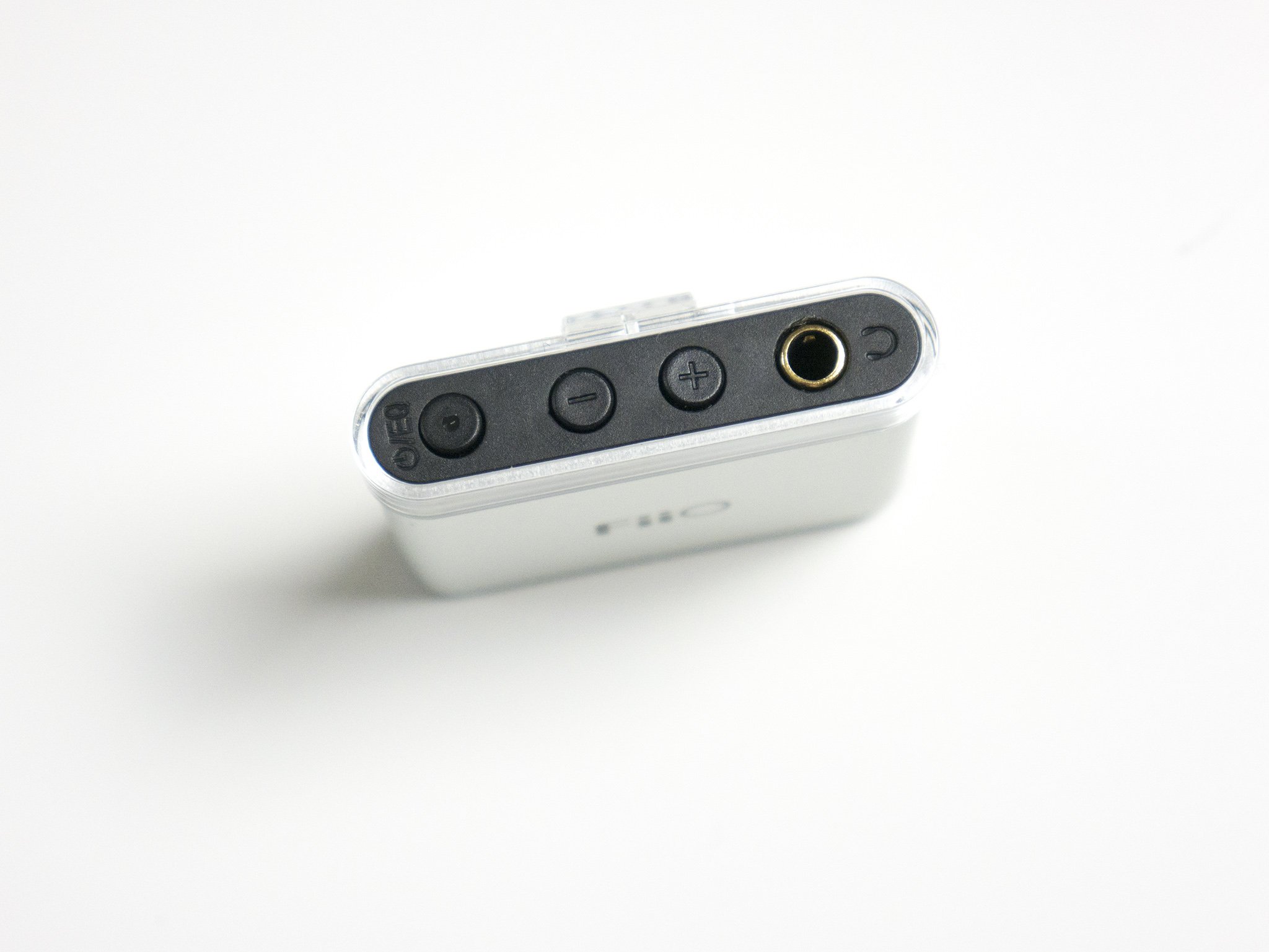
On the A1 you've got volume controls which operate independently of those on your phone. The nature of this little beast is to add volume, and with the combination of the two level controls, you're able to make fine adjustments and get everything just so. Of course just adding volume is no good if the sound quality isn't preserved, but there's nothing to worry about there with the A1.
There is no noticeable loss in fidelity with the Fiio A1
The real question is just how much of a difference does the A1 make? When you plug it in and turn it on, there is a definite increase in volume compared to not having it, but it's not a huge jump. That's also a good thing because it's not going to blow out your ear drums the first time you use it. As you adjust it a little, the differences become greater while still retaining a crisp sound.
The other neat feature on the A1 is a selection of pre-set equalizer settings. There aren't many, and you don't have any control over tweaking them as you would in software on your phone. But they're much easier to get at than taking out your phone, unlocking it, and going into the equalizer. Just press the button and it cycles through so you instantly get a feel. The LED on the button flashes to correspond to the setting you're currently on.
The flat profile is distinctly quieter than any of the three bass equalizer settings, but there's no indication of any compromise in fidelity at each step.
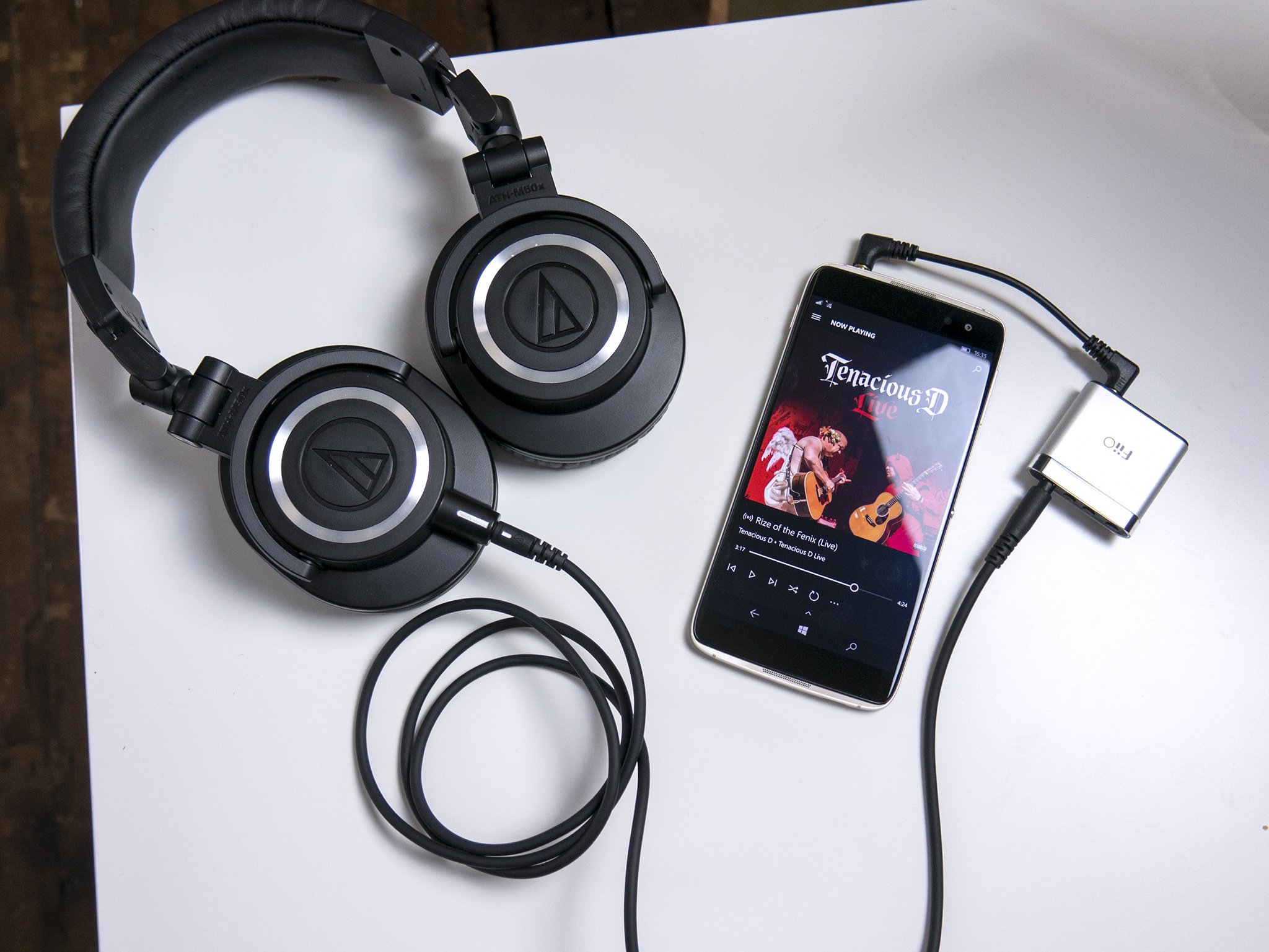
Ultimately the A1 does do what it says it's going to, and it does a decent job at it for something that costs so little. If you frequently find yourself in noisy situations, or if you just like things to really boom, it might be worth the spend.
It's a neat little box of tricks, and it's so small you can throw it in any pocket or bag. It's a well-made product with noticeable results. The equalizers didn't really do much for me, but then I'm also a fan of a fairly neutral sound. Your mileage may vary, but as far as pocket amplifiers go, this is a great little thing.

Richard Devine is a Managing Editor at Windows Central with over a decade of experience. A former Project Manager and long-term tech addict, he joined Mobile Nations in 2011 and has been found on Android Central and iMore as well as Windows Central. Currently, you'll find him steering the site's coverage of all manner of PC hardware and reviews. Find him on Mastodon at mstdn.social/@richdevine
